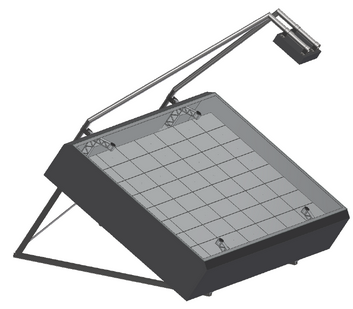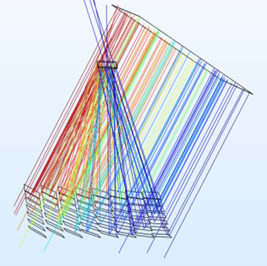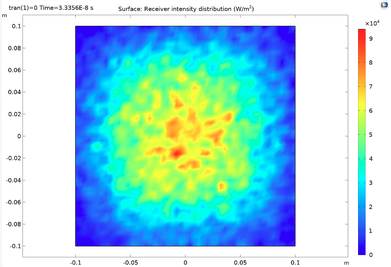As everyone affected by the latest measures for the pandemic, the EuroSun 13th International Conference on Solar Energy for Buildings and Industry was not hosted in Athens, Greece as planned, but on a specifically designed web platform. Nevertheless, we did not miss the opportunity to showcase our work.
Within the scope of the project in order to reduce costs, a concentrating collector with a simple flat-plate receiver is proposed. The optical concentrator consists of an array of mirror facets placed in a box that protects the mirrors from wind loads and dirt. The innovative micro mirror box system has a built-in tracking mechanism, but the whole system is fixed. The solar concentrator consists of an array of mirror facets preconfigured to form a focal point at approximately 1.5 m

This concept presents the following advantages:
-
The point-focusing feature allows high concentration values of ~50 even with relatively large optical and tracking errors of about ± 10 mrad.
-
Instead of expensive receiver tubes, a small non-evacuated flat-plate receiver can be used.
-
A patent of micro-mirror systems was filed by SIJ/DLR in 2006 (Sauerborn, 2008). A prototype developed for CSP applications was already designed.
-
It is an innovative concept that has not yet been analysed and tested and no research results regarding its performance were found in the literature.
Raytracing models were created with the COMSOL (Fig.2) and Tonatiuh software tools. These calculations allow the specification of the number of mirrors, their dimensions, and their gap width.

The angular ray distribution of the sun disk is also implemented on the mirror surfaces and combined with the optical error calculation.

The complete model of the solar collector system for the calculation of annual energy yield with Matlab Simulink Carnot toolbox is shown below. The Carnot program combines the easy-to-use graphical environment of Simulink with the powerful algorithms and differential equation solvers of MATLAB for the application of solar thermal system simulation

The expected energy yield can be up to about 800 kWh/m²a under the weather conditions of Patras, Greece using standard optical components. Further improvements are possible by using AR glazing for the glass cover of the mirror array, higher absorber, or mirror quality. A cost-benefit analysis of these material properties will have to be carried out. The new collector design can also be integrated in buildings very easily. On our next steps, two identical prototypes will be assembled and tested experimentally in Jülich, Germany and Patras, Greece, in order to study the proposed system’s behaviour under outdoor conditions for both climate zones. Technical details of the tracking system, as well as operating problems and impacts on the overall system costs is confidential at this point but will be published as soon as the experimental testing is complete.